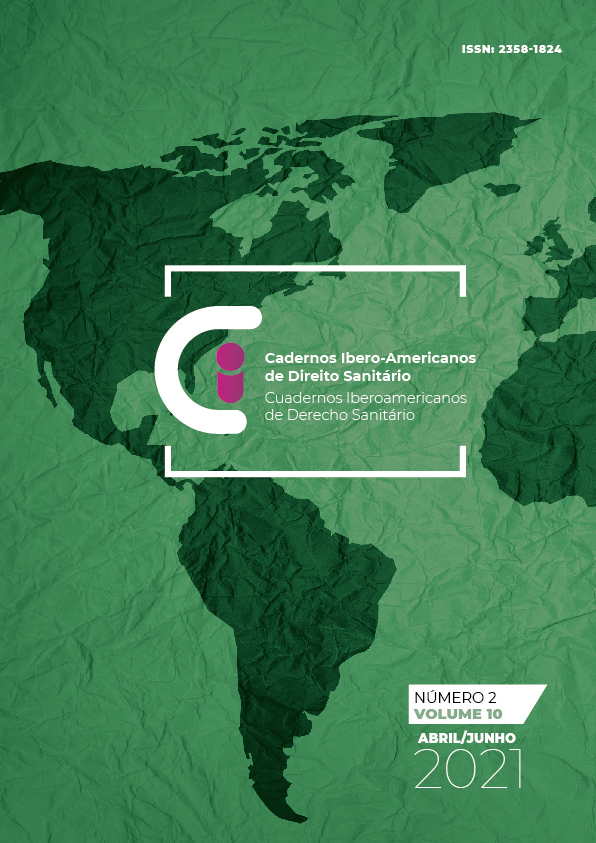Abstract
The history of pandemics is intrinsically associated with the evolution of humanity. Throughout time, successive events of a pandemic nature, have occurred, which have largely conditioned the development of peoples. The millennial history of pandemics reveals the recurrent nature of this type of phenomenon. In recent decades, there has been growing concern about the risk associated with emerging diseases. The changes resulting from the model of social and economic development have contributed to worsening inequalities in relation to the living conditions of populations. Human concentration, mobility, the trend towards urban concentration, issues related to the environment and human behaviour persist as determining factors in the defence against different types of threats. The pandemic caused by the Sars-Cov-2 virus put to the test, in global terms, the levels of preparedness and response capacity of the different countries, revealing the fragility of the responses and the great difficulty in protecting the social groups most exposed to the disease. The contemporary world has technological instruments and capabilities at the level of scientific research and information sharing and knowledge generation, which make it stronger and better prepared to react to unexpected biological phenomena. Modern public health will have to prevent and anticipate potential and emerging risks, preparing citizens and health systems for a robust and appropriate response to such events.
References
De Campos TC. The Traditional Definition of Pandemics, Its Moral Conflations, and Its Practical Implications: A Defense of Conceptual Clarity in Global Health Laws and Policies. Vol. 29, Cambridge Quarterly of Healthcare Ethics. 2020. p. 205–17.
Piret J, Boivin G. Pandemics Throughout History. Vol. 11, Frontiers in Microbiology. 2021.
LePan N. Visualizing the History of Pandemics. Vis Hist Pandemics [Internet]. 2020;2:1–16. Available from: https://www.visualcapitalist.com/history-of-pandemics-deadliest/
Madhav N, Oppenheim B, Gallivan M, Mulembakani P, Rubin E, Wolfe N. Pandemics: Risks, Impacts, and Mitigation. In: Disease Control Priorities, Third Edition (Volume 9): Improving Health and Reducing Poverty. 2017.
Cravioto EG, García IG. The pest in Antiquity. Historiographical origins. Vol. 18, Revista de Historiografia. 2013.
Gullot CC, Serpa GR. Major pandemics in the history of mankind. Vol. 92, Revista Cubana de Pediatria. 2020.
Jarus O. 20 of the Worst Epidemics and Pandemics in History. Live Sci. 2020;(12).
Moslonka-Lefebvre M, Monod H, Gilligan CA, Vergu E, Filipe JAN. Epidemics in markets with trade friction and imperfect transactions. J Theor Biol. 2015;374.
Hernández-Mesa N, Llanes JH, Betancourt CL. Major epidemics in human history. From the Plague of Athens to COVID-19. Rev Habanera Ciencias Medicas. 2020;19(5).
Littman RJ. The plague of Athens: Epidemiology and paleopathology. Vol. 76, Mount Sinai Journal of Medicine. 2009.
Papagrigorakis MJ, Yapijakis C, Synodinos PN, Baziotopoulou-Valavani E. DNA examination of ancient dental pulp incriminates typhoid fever as a probable cause of the Plague of Athens. Int J Infect Dis. 2006;10(3).
Sabbatani S, Manfredi R, Fiorino S. The Justinian plague (part one). Infez Med. 2012;20(2).
Cravioto EG, García IG. The pest in Antiquity. Historiographical origins. Vol. 18, Revista de Historiografia. 2013.
Geoffroy AS, Díaz JP. From the antonine plague to the cyprian plague: Scopes and consequences of global plagues in the Roman empire in the 3rd century ad. Rev Chil Infectol. 2020;37(4).
Sang DL. The First Pandemic in History: The Justinian Plague. Crit Rev Hist. 2020;132.
Sabbatani S, Fiorino S. [The Antonine Plague and the decline of the Roman Empire]. Infez Med. 2009;17(4).
Gilmore JK. Leprosy at the Lazaretto on St. Eustatius, Netherlands Antilles. Int J Osteoarchaeol. 2008;18(1).
Slack P. Plague: Black Death and Pestilence in Europe. Engl Hist Rev. 2004;119(483).
Jeuneman F. The Black Plague. Res Dev. 1998;40(13).
Crosby AW, Cook ND. Born to Die: Disease and New World Conquest, 1492-1650. Popul Dev Rev. 1998;24(3).
Pringle H. How Europeans brought sickness to the New World. Science (80- ), 2015.
Johnson R. The 10 Epidemics That Almost Wiped Out Mankind. The Business Insider. 2011.
Lippi D, Gotuzzo E, Caini S. Cholera: A history of pandemics. In: Microbiology spectrum. 2016.
Ashworth W, Lewis RA. Edwin Chadwick and the Public Health Movement, 1832-1854. Econ Hist Rev. 1953;5(3).
Roy P, Islam SR, Rahman F, Siddiqui MMR. Avian Influenza & Human Health. Anwer Khan Mod Med Coll J. 2014;5(1).
Aassve A, Alfani G, Gandolfi F, Le Moglie M. Epidemics and trust: The case of the Spanish Flu. Heal Econ (United Kingdom). 2021.
Rosenbert J. 1918 Spanish Flu Pandemic. Thought Co. 2019;(April 2018).
Yoshikura H. Spanish flu, asian flu, hong kong flu, and seasonal influenza in Japan under social and demographic influence: Review and analysis using the two-population model. Vol. 67, Japanese Journal of Infectious Diseases. 2014.
Sabharwal S, Mahajan A, Gupta SK. Swine influenza A (H1NI virus) flu or common cold. Vol. 11, JK Science. 2009.
Fritzell C, Rousset D, Adde A, Kazanji M, Van Kerkhove MD, Flamand C. Current challenges and implications for dengue, chikungunya and Zika seroprevalence studies worldwide: A scoping review. PLoS Negl Trop Dis. 2018;12(7).
Sheehan MC, Fox MA. Early Warnings: The Lessons of COVID-19 for Public Health Climate Preparedness. Int J Heal Serv. 2020;50(3).
Schellekens P, Sourrouille D. COVID-19 Mortality in Rich and Poor Countries: A Tale of Two Pandemics? COVID-19 Mortality in Rich and Poor Countries: A Tale of Two Pandemics? 2020.
Megahed NA, Ghoneim EM. Antivirus-built environment: Lessons learned from Covid-2020.
Venkatesan P. The changing demographics of COVID-19. Vol. 8, The Lancet. Respiratory medicine. 2020.
Shamdasani P, Trubiano JA, Smibert OC, Owen CE, Liew DFL. COVID-19: collaboration will keep us ahead of the curve. Vol. 50, Internal Medicine Journal. 2020.
WHO. Emergencies preparedness, response. WHO, 2018;2(April 1997).
Lal A, Erondu NA, Heymann DL, Gitahi G, Yates R. Fragmented health systems in COVID-19: rectifying the misalignment between global health security and universal health coverage. Vol. 397, The Lancet. 2021.
The Lancet Public Health. Will the COVID-19 pandemic threaten the SDGs? Vol. 5, The Lancet Public Health. 2020.
Kumar S, Poonam, Rathi B. Coronavirus Disease COVID-19: A New Threat to Public Health. Curr Top Med Chem. 2020;20(8).

This work is licensed under a Creative Commons Attribution-NonCommercial 4.0 International License.
Copyright (c) 2021 Adalberto Campos Fernandes (Autor)

